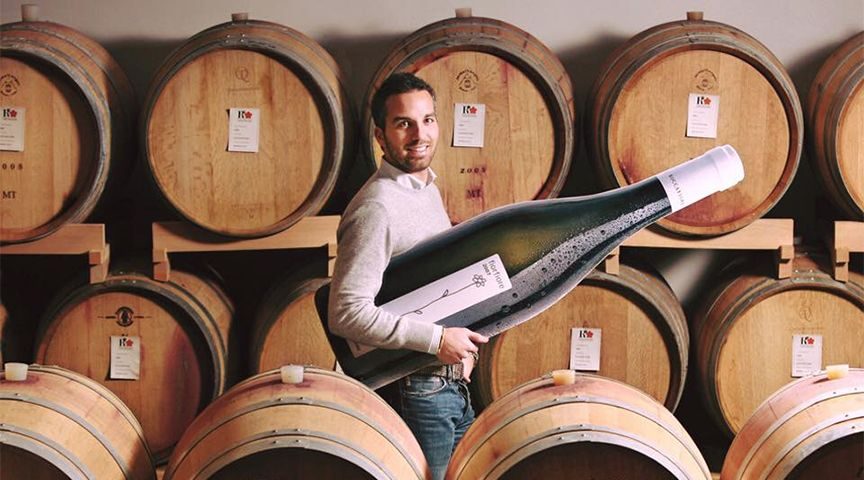A white wine aged in large cask? Roccafiore in Umbria is doing it brilliantly

Happy New Year from Vignaioli and the Vignaioli blog!
January 5, 2017
Scarzello “a rising star” according to Joe Bastianich and David Lynch
January 20, 2017A white wine aged in large cask? Roccafiore in Umbria is doing it brilliantly

“Roccafiore wines are not just wines,” write the author of the winery’s website. “They are something more: a synergy of soil, microclimate and vines, a vital interpretation of the country and a rediscovery of traditional practices. Roccafiore wines show that taste and quality are the result of a patient dialogue between heart and mind.”
Their approach to winemaking, they explain, is guided by a balance of “natural” and “rational” philosophies: “The choices of a natural and rational approach melt with the finicky work in order to take the perfect grape to the making.”
In the same way that a bottle and a label can tell you a lot about the wine inside, so can a winery’s website. And Roccafiore’s website and its entire social media presence are among the best that we’ve ever seen in Italy. (The site is fun, easy to navigate, and full of juicy information about the wines, the winemakers, and the estate. It’s really worth check out as is their Facebook.)
Located in Todi township in the heart of green Umbria, the Roccafiore winery focuses on sustainable farming practices, minimal intervention in the cellar, and classic expressions of Umbrian viticulture.
If you’ve ever been to Umbria, you know why such an approach is possible there: It’s one of the most pristine rural areas in Italy, with very little industrial or commercial development. And while winemaking is never an easy or uncomplicated task, the Umbrian landscape offers the ideal backdrop for winemakers like Roccafiore, where the owners seek to deliver pure, vibrant, authentic wines with transparent aromas and flavors.
One of the winery’s flagship wines is the Fiorefiore, a 100 percent Grecchetto di Todi that is aged — some will be surprised to learn — not in stainless-steel vats but rather large-format Slavonian oak casks, otherwise known as botti. Almost all of white winemaking in Italy today is carried out in stainless steel. But with the help of a very patient winemaker, this wine ages for 12 months in 50-hectoliter casks that have been used in multiple vintages. The porous nature of the wooden vessel allows for very slow micro-oxygenation of the wines during again, resulting in complex, layered, and nuanced flavors. (Check out the fact sheet here.)
It’s simply one of the best white wines we’ve ever tasted from Umbria and its the winner of this year’s (2017) Tre Bicchieri or Three Glass award from the editors of the Gambero Rosso annual guide to the wines of Italy, the publication’s top ranking.
Thoughtful wine by thoughtful winemakers…
